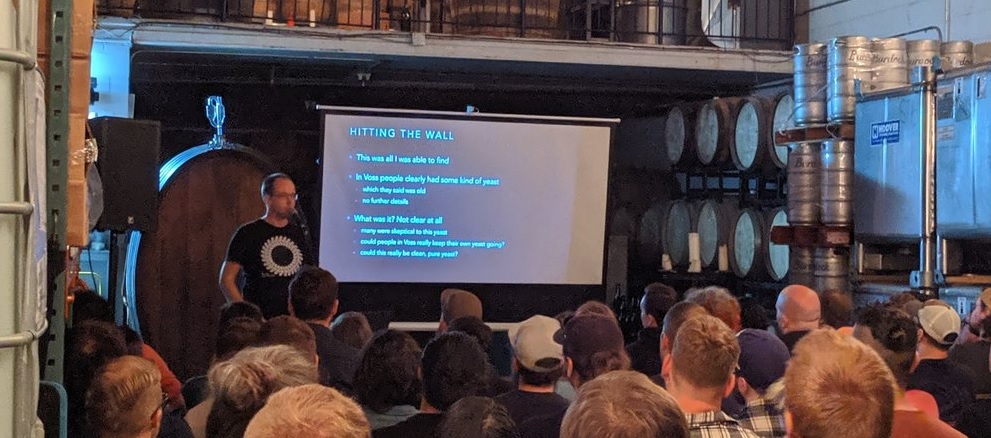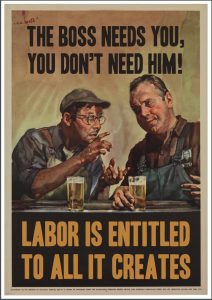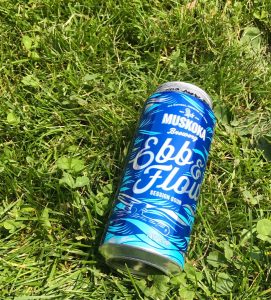 Fine. Here we are. It’s now dark as midnight on the bus ride home from work. The garden is all dead. Dead. Dark. Wind. Cold. And these sensations are also the first hints of the happy holiday season. Depending on your cultural context, it may be just three, four, five or six weeks from the day when everyone packs it in and hits both the bottle and the buffet hard. Not everyone is waiting. My pal Ben, who is semi-Nepalese, is traveling there and found a good beer that was also basically semi-Nepalese. As illustrated. No reports yet on if it was any good.
Fine. Here we are. It’s now dark as midnight on the bus ride home from work. The garden is all dead. Dead. Dark. Wind. Cold. And these sensations are also the first hints of the happy holiday season. Depending on your cultural context, it may be just three, four, five or six weeks from the day when everyone packs it in and hits both the bottle and the buffet hard. Not everyone is waiting. My pal Ben, who is semi-Nepalese, is traveling there and found a good beer that was also basically semi-Nepalese. As illustrated. No reports yet on if it was any good.
Also internationalistically, now that craft beer has co-opted kveik, is Lar on the hunt for another indigenous set of yeast strains from Russia?
Kveik signals very clearly when it’s done. It’s almost like the little critters are knocking on the glass, saying “we’re done now.” Starter turns all grainy, and once you stop the stirrer, they settle out in 3-4 minutes. Not so with this Russian yeast. It’s just as milky still.
Speaking of new discoveries, another new beer publication was launched this week, Beer Edge featuring the northeast US’s Andy Crouch and John Holl. The subscription rate is a bit out of my snack bracket but we are promised tidbits au gratis from time to time, focused perhaps more on the trade side of things than whatever community means or doesn’t mean:
From long-form writing that explores the culture, business, and process of brewing, to shorter essays, think pieces, and timely editorials, Beer Edge hosts sharp writing that provides context to an industry that often just receives cursory coverage. For consumers, bartenders, brewers, industry executives, distributors, farmers, bar owners, tourism boards, analysts, and anyone else eager for more news about the craft beer industry…
Speaking of the trade everywhere, Crystal Luxmore tweeted about an organization and an issue that needs more attention:
When you love tasting, selling and making alcohol it feels like drinking is a joyful part of the job — but it also opens you up to massive health risks and addiction issues…
The organization is Not 9 to 5 and the issue is over-drinking on the job when your just is in the drinks trade. More here. Not at all unrelated, a British self-described archaeologist, technologist, infovore, mediocre chef under the nom de plume “Archaic Inquiries” published a rather shocking piece on the role of alcohol in archaeology:
I’ve not worked outside of archaeology much, so perhaps it shouldn’t be a surprise that I didn’t think that was a particularly inappropriate thing to say to a supervisor you’d just met (though it didn’t strike me as very smart). But as I thought about it, I started to recall all the antics of archaeologists under the influence, both adorable (getting in trouble for using government jello for wrestling at the McMurdo Antarctic research station) and not so adorable (I once saw a crew chief fall out of the company truck because she couldn’t stand… at the end of the work day).
I also learned that we “shouldn’t giggle when someone pukes into their shovel test pit“! Wow. I have not had a drink since Saturday. Seriously.
 I have a confession. And not that I have puked in a test shovel pit. No, I am uncomfortably interested in one aspect of the TV show from 40 years ago, Three’s Company. Only one aspect, I said. The Regal Beagle. Why? Well, the past is a foreign land worth studying. And when writing my bits of the history of Ontario, I realized that SCTV’s McKenzie Brothers and their movie Strange Brew was a last vision of the world of Canadian beer before micro hit us all over the head. So, too, in a way was Three’s Company‘s Regal Beagle – an American vision of a 1970s faux British pub. I want to put together enough images to figure out the pub set to see what what props were considered necessary 45 years ago. Here’s a blurry analogue vid view of the bar unfortunately filled with bad acting. There seem to be three beer engines back there but were they used? Here is a gif posted this week of Ralph Furley walking into the place, showing the brasses by the door. Here is another tweet with an image of the one bleak plot of the entire show – but with the bonus of an out of place “Ye Olde English” nutcracker sitting at the end of the bar, the couple in the background (above) expressing it for all of us.
I have a confession. And not that I have puked in a test shovel pit. No, I am uncomfortably interested in one aspect of the TV show from 40 years ago, Three’s Company. Only one aspect, I said. The Regal Beagle. Why? Well, the past is a foreign land worth studying. And when writing my bits of the history of Ontario, I realized that SCTV’s McKenzie Brothers and their movie Strange Brew was a last vision of the world of Canadian beer before micro hit us all over the head. So, too, in a way was Three’s Company‘s Regal Beagle – an American vision of a 1970s faux British pub. I want to put together enough images to figure out the pub set to see what what props were considered necessary 45 years ago. Here’s a blurry analogue vid view of the bar unfortunately filled with bad acting. There seem to be three beer engines back there but were they used? Here is a gif posted this week of Ralph Furley walking into the place, showing the brasses by the door. Here is another tweet with an image of the one bleak plot of the entire show – but with the bonus of an out of place “Ye Olde English” nutcracker sitting at the end of the bar, the couple in the background (above) expressing it for all of us.
Getting back to real life nostalgia, Alistair of Fuggles fame was able to revisit the Prague of his twenties and visit his old favour boozer, U Slovanské lipy:
…no airs and graces, no pointless fripperies, and the majority of patrons were locals rather than tourists, perfect. The big thing that had changed though was the prices. Where I had been used to paying only 20kč for a half litre of Kout’s magisterial 10° pale lager, the nearest equivalent available, Albrecht 10° from Zámecký pivovar Frýdlant, was about double that. Yeah, it was odd having sticker shock in a Czech pub, but a quick conversion in my brain telling me the beer was $2 a pop for superb lager soon put that into context.
In upstate New York, a tiny town voted to go “wet” this week:
In a 3-to-1 vote, the referendum, aimed at making the town “wet” again, passed and a town that has been dry since Prohibition will now be wet. “I’m all for it, absolutely,” said Eleanor deVries on Tuesday afternoon after voting, adding that the town needs it economically.
I trust Eleanor has settled down since Tuesday’s results. Economically, by the way, is the new medicinally.
Sadly but yet again, your weekly reminder that good beer people are not all good people – this time, the distasteful and fairly racist Halloween outfit edition:
Breweries can talk about diversity all they want but when this idiocy still happens it shows how far craft beer has to go to create a safe and welcoming space for POC. You need to not just talk about diversity but “walk the walk”.
I might have added “…as well as a welcoming space for non-fascists…” but that’s just me. Not quite as horrible, but still thoughtless…
You know what’s shitty? A prime time TV show on one of the major channels asking for free beer for their changing rooms & wrap party in exchange for ‘exposure’. If you are paying hundreds of thousands of pounds for your ‘talent’ you can afford a few hundred on some fucking beers…
Conversely and to end on a happy note, Jeff gave us a four photo explanation of why in Sicily he has proclaimed:
This place immediately enters my top ten of best drinking establishments I’ve been to in my life…
Exhibit A. Exhibit B. Exhibit C. Exhibit D. Case closed.
There you go. A bit of a global tour. In space and time. The good. The bad. The ugly. For further beery links, check out the Boak and Bailey news update on Saturday and then bend an ear towards the OCBG Podcast on Tuesdays. And look to see if there was a mid-week post of notes from The Fizz as well.



 Did someone say England? The BBC Archives shared
Did someone say England? The BBC Archives shared  Ah vacation! Remember that. Seems like it was just a few days ago. Because it was just a few days ago. Now I sit here in the hard black shoes and a tie, half boggled from a work meeting that ended towards midnight. It’s so much better on holiday.* But its not all happy happy joy joy on vacation. Things can get out of hand. I had my concerns, for example, for the place Garrett Oliver had found himself when he
Ah vacation! Remember that. Seems like it was just a few days ago. Because it was just a few days ago. Now I sit here in the hard black shoes and a tie, half boggled from a work meeting that ended towards midnight. It’s so much better on holiday.* But its not all happy happy joy joy on vacation. Things can get out of hand. I had my concerns, for example, for the place Garrett Oliver had found himself when he  Gorgeous tiles in a Belgian bar,
Gorgeous tiles in a Belgian bar,  Myles on Twitter
Myles on Twitter 






